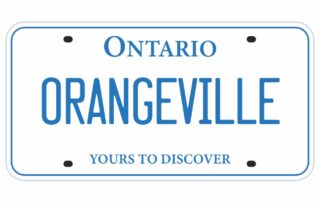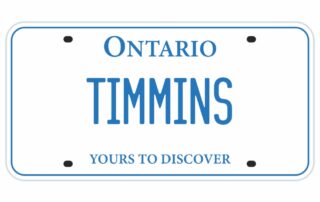Break Free from the Divorce Industrial Complex Trap
Estimated number of active divorce cases, 2013
| Divorce Industry | Canada | Ontario | Toronto (GTA) |
|---|---|---|---|
| New cases in 2013 | 76,908 | 29,610 | 8,883 |
| Cases from previous year(s) | 84,030 | 32,351 | 9,705 |
| Total | 160,938 | 61,691 | 18,588 |
Source: Estimates based on data from Statistics Canada
- The Divorce Industrial Complex – AlbertMohler.com Few Americans seem to understand that marriage is being undermined by what can be called a “Divorce Industrial Complex” that includes lawyers, counselors, court personnel, and various others. In other words, divorce is something of a market reality in America, and millions of persons are involved in this business.
- The Divorce Industrial Complex London is the divorce capital of the world, but Akhmed v Akhmedova was a battle to make even its jaded lawyers sit up and take notice.
- Avoid the Divorce Industrial Complex The $10 Billion Divorce Industry, aka divorce industrial complex where the insiders reap vast rewards and many others benefit from your divorce nightmare!
- The Divorce Industrial Complex The Divorce Industrial Complex ; dc.contributor.author, Mohler, R. Albert, en_US ; dc.date.accessioned, 2010-10-04T20:11:02Z ; dc.date.available, 2010-10-04T20:11: …
- Joe Jonas, Sophie Turner and the shifting dynamics of … The celebrity divorce industrial complex. While 2023 has been dubbed the summer of break-ups — Britney Spears and Sam Asghari, Justin and Sophie …
- The Divorce Fantasy World The cultural elites love the Sexual Revolution and actively promote the Divorce Ideology. They provide a platform for happily-divorced people, …
- Joe Jonas, Sophie Turner and the shifting dynamics of the “ … Dr. Simone Driessen on ABC Australia on the shifting dynamics of the “celebrity divorce industrial complex”.
- Divorce as Revolution by Stephen Baskerville, Ph.D. This growth industry derives from the impact of divorce on children. The divorce revolution has spawned a public-private industrial complex …
- How the Big Business of Divorce Benefits Men The only way to curtail the divorce-industrial complex is to create an alternative pathway to divorce that keeps courts and judges out of the …
- When divorce gets complicated Ten reasons why divorce proceedings can become complex · 1. Property and other assets · 2. Family businesses · 3. Hidden assets · 4. High net worth.
- The Divorce Gap “The only way to curtail the divorce-industrial complex is to create an alternative pathway to divorce that keeps courts and judges out of the …
- Divorcing couples under more pressure with higher … Divorce brings many … Real estate broker Alex Cygal said some people can find it difficult … industry for profit not actual shelter, too …
- High-Conflict Separation and Divorce Extremely high levels of conflict, communication and ambivalence about the divorce decision hallmarked the enmeshed pattern. The parties debated …
- The Evolution of Divorce Ironically, then, the widespread availability of easy divorce not only enabled “bad” marriages to be weeded out, but also made it more difficult for “good” …
- The Impact of Divorce on Your Business What You Need to … It’s important to note that the treatment of businesses in divorce cases can be complex, and legal advice is essential. … industry and knowledge …
- Divorce Is Big Business While hard numbers are impossible to nail down, various trade and business groups estimate the U.S. divorce industry falls somewhere between a …
- Fact Sheet – Divorce As family law can be complex, it is usually best for individuals to get advice about their situation from a family law lawyer. These lawyers are in the best …
- Marriage Story Tells a Sorrowful Tale of the Divorce Industrial Complex Marriage Story Tells a Sorrowful Tale of the Divorce Industrial Complex. by Will Johnson 4 years ago. Are we living in The Johanaissance? Has Hollywood got …
- Reviews: Divorce Corp The divorce Inc is the most totalitarian institution ever created by Family Courts, Family Bar Associations, Custody Evaluators, Guardian at Litems, unethical …
- Divorce: what no one wants to tell women about quitting a … That book was This American Ex-Wife, a new memoir-cum-manifesto by journalist Lyz Lenz, which tells the story of both her divorce and the …
Ken Maynard CDFA, Acc.FM
I assist intelligent and successful couples in navigating the Divorce Industrial Complex by crafting rapid, custom separation agreements that pave the way for a smooth transition towards a secure future. This efficient process is achieved in about four meetings, effectively sidestepping the excessive conflicts, confusion, and costs commonly linked to legal proceedings. Clients have the flexibility to collaborate with me either via video conference or in-person through a DTSW associate at any of our six Greater Toronto mediation centers, located in Aurora, Barrie, North York, Vaughan, Mississauga, and Scarborough.


 In the current system, the biggest drivers of cost are legal fees and time. Imagine that you and your spouse are going to divorce and each of you heads to a lawyer’s office, pays a retainer and begins the process.
In the current system, the biggest drivers of cost are legal fees and time. Imagine that you and your spouse are going to divorce and each of you heads to a lawyer’s office, pays a retainer and begins the process.











































